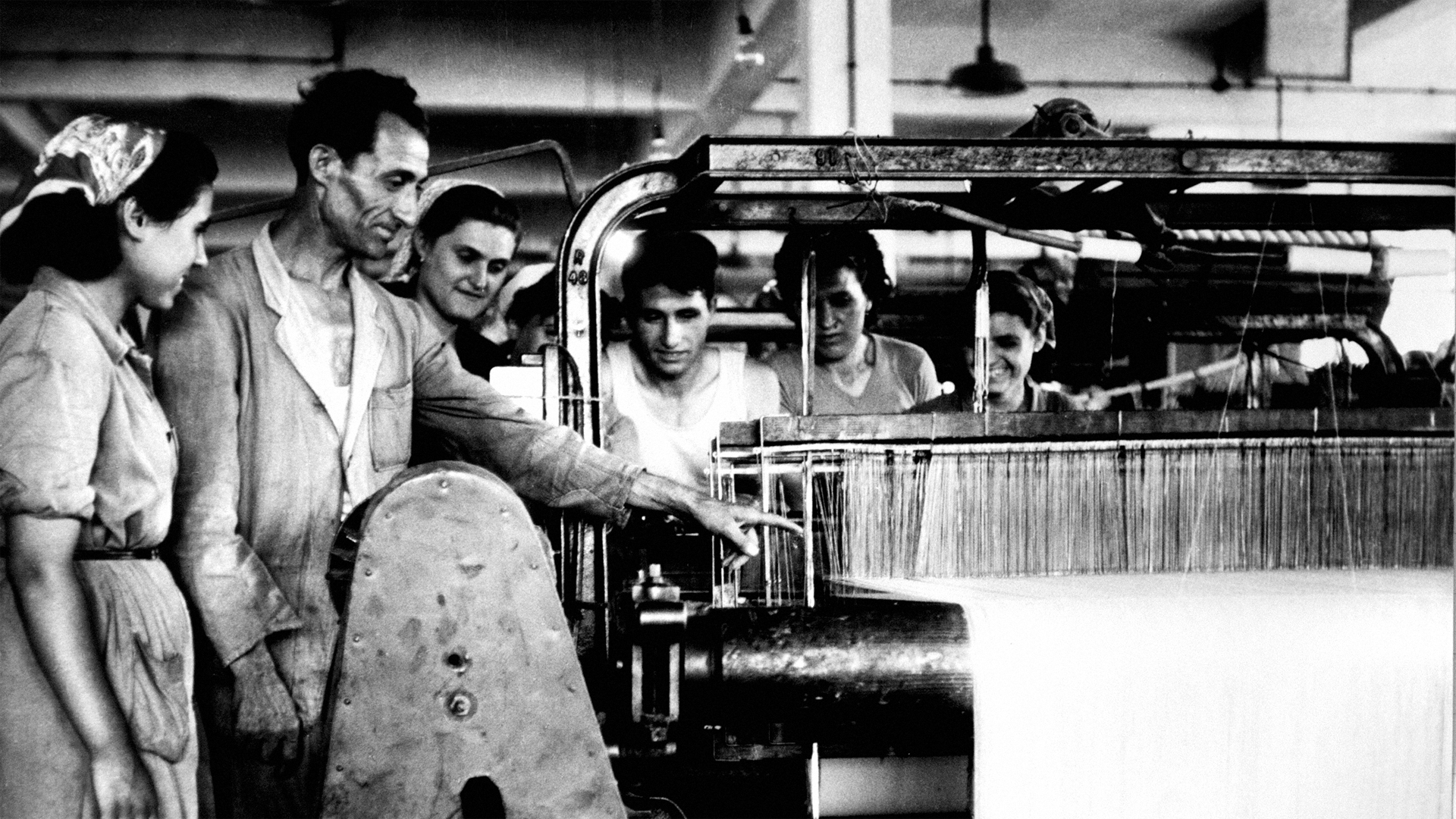MACHINE
The use of complex machines allows a company to increase profit, as it also requires specialised workers’ knowledge. In the age of robotization could mechanical knowledge be fully replaced by electronic knowledge?
5. The generators of the first diesel power plant in Gabrovo, 1927. Interactive Museum of Industry, Gabrovo, Bulgaria.
For many years some machines were operated almost exclusively by women. After a short training course, often tutored by men, women took over particular tasks. Nowadays, does the world of labour still have specific “machines for women”? Are they adapted in any way?
6. Older worker passing his knowledge to the young workers, 1948. Period of State Socialism, 1944-1989. Interactive Museum of Industry, Gabrovo, Bulgaria.
Buttons are objects of different shapes, sizes and materials which, when pressed by a human hand, transform a mechanical movement into an action. The action can be triggered by different impulses, among them the electrical impulse, as is the case of computer keyboards, or the mechanical one, if we consider the case of levers. In particular, the choice of materials for the production of mechanical buttons for industrial tasks can be related to issues related to manufacturing costs, the desired functionality or with the health and safety of workers.
Plenty of industrial mechanisms depend on this interface between human and machine – hence the “Press Here” title – and, therefore, button action programming is essential to numerous functions involving everything from small to large industrial structures. In many cases, the operation safety in machines, industrial buildings, production chains and assembly lines depends on the human decision on a specific button. For example, a person can trigger the fire detection system in a factory through a button and, in that case, the safety of the workers and the raw materials inside this factory may depend on this mechanical push movement.
The end of the buttons may be coming soon, since one of the premises of the current Digital Revolution is to replace the presence of the human being with autonomous processes. Automatization may imply that by removing human presence from part of industrial production, the presence of mechanical buttons will no longer be necessary. On the other hand, digital interfaces such as touch screens have adopted the push movement of fingers, so as to interact with smooth surfaces which don´t have buttons. Press here seems to be an instruction that shifts from mechanical buttons to digital surfaces.

